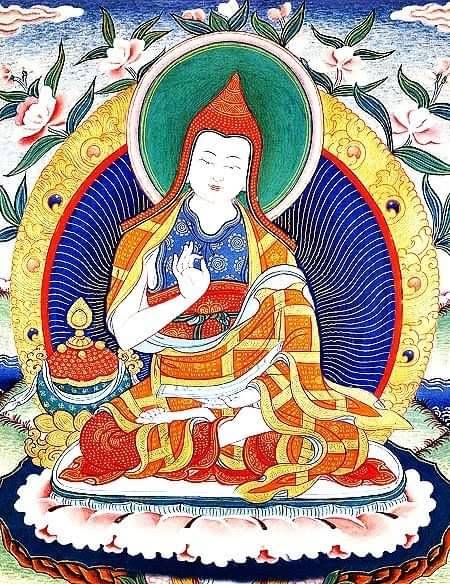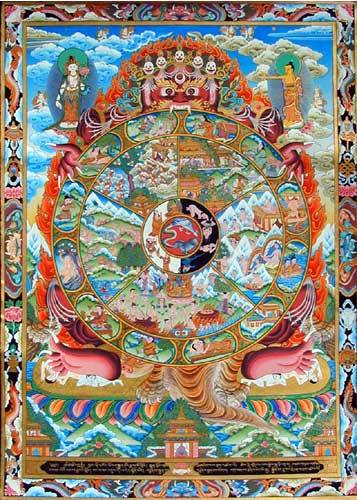#mystichealingtherapy
Text
Dealing With Anger

ON DEALING WITH ANGER
Undoubtedly, both Shantideva and the Dalai Lama are most articulate in their discourse on how to deal with anger and hatred.
Shantideva in fact opens the chapter on patience with the strong statement that an instance of anger can destroy positive imprints created over “a thousand eons.”
He further asserts that there is no evil like hatred and that there is no fortitude like patience. Thus, he recommends that we all seek to develop patience.
In Shantideva’s view, anger acts as the principal obstacle to the development of patience. To use the well-known medical analogy, hatred is the poison and patience is the medicine that removes the poisonous toxins from within the mind.
As the Dalai Lama’s commentary makes clear, Shantideva identifies two key elements in our attempts to overcome anger.
First and foremost, it is important for us to have a profound appreciation of the negativity of anger. Of particular relevance is to reflect upon the destructive effects of generating anger.
Second, Shantideva identifies the need to develop a deep understanding of the causal mechanism which underlies the arisal of anger. This is of special interest to the modern reader, who will unavoidably be approaching Shantideva’s text with many of the popular assumptions associated with modern psychology and its views on human emotions.
In verse 7 of the chapter, Shantideva makes the crucial observation that the “fuel” of anger is what he calls “mental discomfort.” This is an interesting notion. The Tibetan word is yi mi-dewa which can be translated as “dejection,” “unhappiness,” or simply as “dissatisfaction.”
It is best understood as a pervasive, underlying sense of dissatisfaction, which need not be felt at the conscious level. It is that nagging feeling that something is not quite right.
Shantideva seems to be suggesting that it is this underlying sense of dissatisfaction that gives rise to frustration. When this happens, the conditions are set for an immediate outburst of anger when things do not go the way we wish.
Once this causal nexus between dissatisfaction, frustration, and anger is understood, we can then appreciate the virtue of Shantideva’s approach to dealing with anger. We can see that much of his approach is aimed at rooting out this underlying sense of dissatisfaction rather than engaging in a head-to-head confrontation with actual full-blown anger.
This is the reason for Shantideva’s emphasis on reflections which aim to create stability of mind. As to the specific practices, the reader can follow the detailed commentary of the Dalai Lama in the appropriate sections of the book.
An important point to note here is that Shantideva does not appear to make any distinction between anger and hatred in his discussion.
However, the Dalai Lama’s commentary explicitly underlines this critical distinction. He observes that, in principle, it may be possible to accept what could be called a “positive anger.”
Anger as an outrage toward injustice done to others can often be an important catalyst for powerful altruistic deeds.
However, he rejects such possibility with regard to hatred. For the Dalai Lama, hatred can have no virtue. It only eats the person from within and poisons his or her interactions with fellow human beings. In his words, “Hatred is the true enemy; it is the inner enemy.”
Perhaps we can say that the feature that distinguishes anger and hatred is the absence or presence of ill-will. A person can be angry without bearing any ill-will toward his or her object of anger. The Dalai Lama instructs us to ensure that our anger, even when it arises, never culminates in full-blown hatred. This, I think, is an important ethical teaching.
A few words on some of the general principles which lie behind the approaches suggested in this book for dealing with our emotions and developing patience may perhaps help the general reader.
A key principle is a belief in what could be called the plasticity of the mind, that is, an assumption of the mind’s limitless capacity for improvement. This is supported by a complex understanding of the psychology of the mind and its various modalities.
Both Shantideva and the Dalai Lama are operating within a long history of Buddhist psychology and philosophy of mind which emphasizes a detailed analysis of human emotions.
Generally speaking, in this view the mind is perceived in terms of a complex, dynamic system where both cognitive and affective dimensions of the psyche are seen as an integrated whole.
So, when the two masters present means of dealing with emotions such as anger, they are not suggesting that we should suppress them. Both Buddhist and modern psychology agree on the harmfulness of mere suppression.
The Buddhist approach is to get at the root so that the very basis for anger is undercut. In other words, Shantideva and the Dalai Lama are suggesting ways of reorienting our character so that we become less prone to strong reactive emotions such as anger. It is in this light that most of the reflections recommended in this volume should be understood.
The motto is simple: Discipline your mind. Shantideva underlines the critical importance of this inner discipline with a wonderful analogy:
Where would I possibly find enough leather
With which to cover the surface of the earth?
But (wearing) just leather on the soles of my shoes
Is equivalent to covering the earth with it.
Likewise it is not possible for me
To restrain the external course of things;
But should I restrain this mind of mine
What would be the need to restrain all else?
(Guide, V:13–14)
This of course is reminiscent of the memorable verse from the Dhammapada in which the Buddha says:
Intangible and subtle is the mind,
That flies after fancies as it likes;
Wise are those who discipline their minds,
For a mind well-disciplined brings great joy. (Verse 35)
Shantideva calls this basic Buddhist practice “guarding the mind” and he discusses it at great length in chapter 5 of his Guide.
Another general principle I wish to draw the reader’s attention to is the basic pragmatism of Shantideva’s teachings. He does not appear to believe in the possibility of one cure or solution to any problem.
His is a strategy that involves drawing extensively from all our inner resources. Many of his arguments appeal to what we may call human rationality. But he also uses approaches that appeal to our fundamental humanitarian sentiments. Often he plays upon our sense of moral outrage too. So, the bottom line seems to be “whatever works best.”
In the final analysis, many of the approaches presented in this book are insights grounded in common sense. For example, who can argue with the sheer practicality of the following lines, which the Dalai Lama is so fond of quoting:
Why be unhappy about something
If it can be remedied?
And what is the use of being unhappy about something
If it cannot be remedied? (Guide, VI:10)
Perhaps most importantly for the modern reader, it is vital to appreciate that both Shantideva and the Dalai Lama do not believe in “instant enlightenment.”
In their teachings, there is the basic assumption that cultivating inner discipline is a time-consuming process. In fact, the Dalai Lama rightly points out that having expectations of immediate results is a sign of impatience, the very factor the teachings in this volume aim to counteract.
With a sense of irony, he observes that often what the modern reader wants is “the best, the fastest, the easiest, and, if possible, the cheapest way.” So the journey of someone who is on the path of self-betterment is arduous and requires long commitment.
Nevertheless, the rewards of embarking upon such a journey are potentially enormous. Even in immediate terms, the benefit such an endeavor brings to the traveler’s life seems remarkable.
If the Dalai Lama is representative of those who have gained the fruits of this journey, its merits are shown to be beyond question.
Geshe Thupten Jinpa
Girton College
University of Cambridge
Perfecting Patience - His Holiness the Dalai Lama & Geshe Thupten Jinpa - Shambhala Publications, Inc.
#wisdom#spirituality#mindfulness#meditation#religion#buddhism#self care#zen#visualization#tibet#mystichealingtherapy
88 notes
·
View notes
Text
Hate Is A Virus
the Dhammapada:
Hatred is never appeased by hatred in this world. By non-hatred alone is hatred appeased. This is a law eternal
Every country in the world will spend billions on war or even sales of weapons like the Uk. On the other side we also how so less is done for work on peace and understanding. Another form of hate is promoted right in newspapers and media hate are promote freely. When we look at that we wonder what want humanity want crying for peace but gears up for hate.
Hate on many levels is like burning fire born from total ignorance, hate can be only fought by love according to the buddha .fighting hate is the work of every day.
When the Buddha talks about love and compassion he talks about universal one, unconditional love and great compassion quality that Shakyamuni himself developed during his life. Compassion and unconditional love demand constant training to develop them, we can not just sit and hope that will come. Also, we need to apply that training to life. Of course, it's time, first to eradicate hate is to understand that we all equal beings are. The second step is also to understand we all suffer, the third step is to take charge whatever we are victims of hate or the one who show it we need to understand that lead just pain and suffering.
Hate is virus of time and only way to change the world will be to change ourselves.
0 notes
Photo

#mystichealingstore #mystichealingtherapy #meditationquotes #tuesdaymotivation www.mystichealingstore.com https://www.instagram.com/p/B5CXsXPHXYG/?igshid=ot69aldo1ftf
0 notes
Text
You give me life now show me how to live !!!

Namo Gurubhe
Namo Buddhaya
Namo Dharmaya
Namo Sanghaya
Thank you for read this blog, so today writing is about an important subject in the path of enlightenment.
Circle of existence, on my own experience been starting losing people that I loved since early age, but losing my mother was a strong bullet in my being.
When we talk about impermanence we have the tension to think that what we have is 100% granted to us.
We think that place we live will stay forever and so on, Lama Milarepa " he was first extremely rich when his father pass away he lost everything " that simple example shows that nothing stay forever.
What is the right attitude to have in this ?
First will be to recognize how life any life is special, second will be to working on impermanence whatever we do things we not stay like this and last one will be to always be compassionate towards ourselves yes but also towards others.
Then that we need to remember the cause and effect of every action but that will be another blog.
Hope you enjoyed
Om mani peme hung hri
Mystichealingtherapy
#writers on tumblr#journal#books#positive quotes#authors#creative writing#prose#motivational quotes#inspirational quotes#inspiring quotes#buddhism#dharma#tibetan buddhism#free tibet#tibetan#tibet
0 notes
Text
Hate Is A Virus

the Dhammapada:
Hatred is never appeased by hatred in this world. By non-hatred alone is hatred appeased. This is a law eternal
Every country in the world will spend billions on war or even sales of weapons like the Uk. On the other side we also how so less is done for work on peace and understanding. Another form of hate is promoted right in newspapers and media hate are promote freely. When we look at that we wonder what want humanity want crying for peace but gears up for hate.
Hate on many levels is like burning fire born from total ignorance, hate can be only fought by love according to the buddha .fighting hate is the work of every day.
When the Buddha talks about love and compassion he talks about universal one, unconditional love and great compassion quality that Shakyamuni himself developed during his life. Compassion and unconditional love demand constant training to develop them, we can not just sit and hope that will come. Also, we need to apply that training to life. Of course, it's time, first to eradicate hate is to understand that we all equal beings are. The second step is also to understand we all suffer, the third step is to take charge whatever we are victims of hate or the one who show it we need to understand that lead just pain and suffering.
Hate is virus of time and only way to change the world will be to change ourselves.
#mystichealingtherapy#wisdom#spirituality#mindfulness#meditation#religion#buddhism#self care#zen#visualization#tibet
10 notes
·
View notes
Photo

#gothicclothing #gothic #yoga #mystichealingstore #mystichealingtherapy #energyhealing #spiritual #attitude https://mystichealingstore.com/ https://www.instagram.com/p/B4zUrRGnyp_/?igshid=13mrelud4weh8
#gothicclothing#gothic#yoga#mystichealingstore#mystichealingtherapy#energyhealing#spiritual#attitude
0 notes
Photo

#mystichealingstore #mystichealingtherapy #instagram #twitter #branding #digitalmarketing #marketingguru #buddhism #tibetanbuddhism #healing https://www.instagram.com/p/B2b611DHAO9/?igshid=17md90dmbzduv
#mystichealingstore#mystichealingtherapy#instagram#twitter#branding#digitalmarketing#marketingguru#buddhism#tibetanbuddhism#healing
0 notes
Video
#mystichealingstore #mystichealingtherapy #gothicclothing #blackfriday2019 https://www.instagram.com/p/B5CdYA0njq9/?igshid=1kcz0i9m3b8qd
0 notes